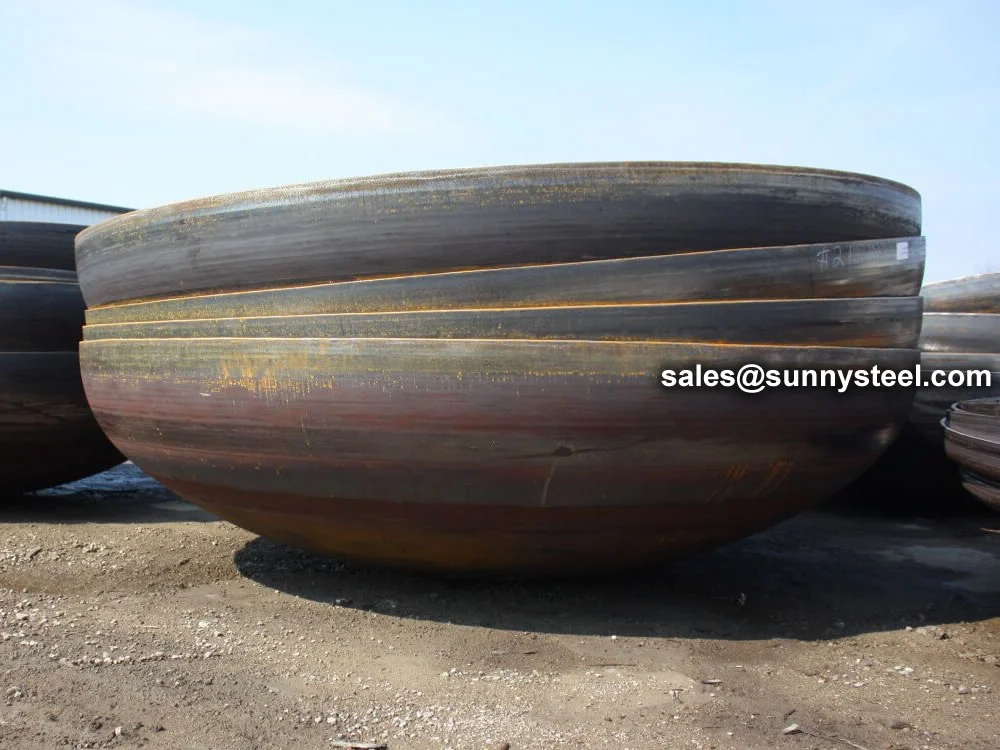
High-performance Dished Ends For Corrosion Resistance In Petrochemical And Industrial Applications
An elliptical head is defined as a component in pressure vessels characterized by its ellipsoidal shape, where the ratio of the major to minor axis is typically 2:1.
High-performance Dished Ends For Corrosion Resistance In Petrochemical And Industrial Applications
An elliptical head is defined as a component in pressure vessels characterized by its ellipsoidal shape, where the ratio of the major to minor axis is typically 2:1. it is associated with specific equations for calculating minimum thickness, maximum allowable working pressure (mawp), and membrane stress as per engineering standards.
Elliptical heads, also known as dished ends or ellipsoidal heads, are critical components used to seal the ends of pressure vessels, boilers, and large-diameter pipelines, offering exceptional corrosion resistance and structural integrity. These heads are vital for boiler pipeline protection and erosion/corrosion resistance in industries such as petrochemical, power generation, chemical processing, and oil and gas.
Compliant with standards like DIN 28011, ASME UG-32, and EN 13445, elliptical heads feature a 2:1 ratio (major to minor axis), optimizing stress distribution and pressure resistance. They are available in sizes up to 72″ (DN1800), with wall thicknesses up to 200 mm, and are manufactured from materials such as carbon steel (HII, P265GH), stainless steel (304, 316L, 1.4541, 1.4571), or alloy steel (15Mo3, 13CrMo44, 10CrMo910). Surface treatments like pickling, passivation, or Fusion Bonded Epoxy (FBE) coatings enhance durability in corrosive environments.
Elliptical heads undergo rigorous testing, including chemical analysis (e.g., HII: C ≤0.16%; 316L: C ≤0.03%), tensile testing (HII: YS ≥235 MPa, TS ≥360-510 MPa; 316L: YS ≥205 MPa, TS ≥515 MPa), hydrostatic testing (up to 9.8 MPa), and nondestructive methods (radiographic, ultrasonic, PMI). With densities of ~7.85 g/cm³ for carbon steel or ~8.0 g/cm³ for stainless steel, and suitability for temperatures up to 450°C (carbon steel) or 870°C (stainless steel), these heads excel in high-pressure vessel applications like boilers, heat exchangers, and refinery systems.
The ellipsoidal design ensures uniform stress distribution, making elliptical heads ideal for sealing pressure vessels and pipelines in harsh, corrosive settings, such as chemical plants, offshore platforms, and power generation facilities.
The elliptical head ( or named ellipsoidal head ) which is a head consisting of two parts: a rotating ellipsoidal sphere and a cylindrical straight section. Elliptical tank head is fabricated to have a certain shape instead of a particular dish radius or knuckle radius. The dish radius is approximately 90% of the diameter and the knuckle radius is approximately 17% of the diameter. 2:1 elliptical flanged and dished heads are ASME compliant.
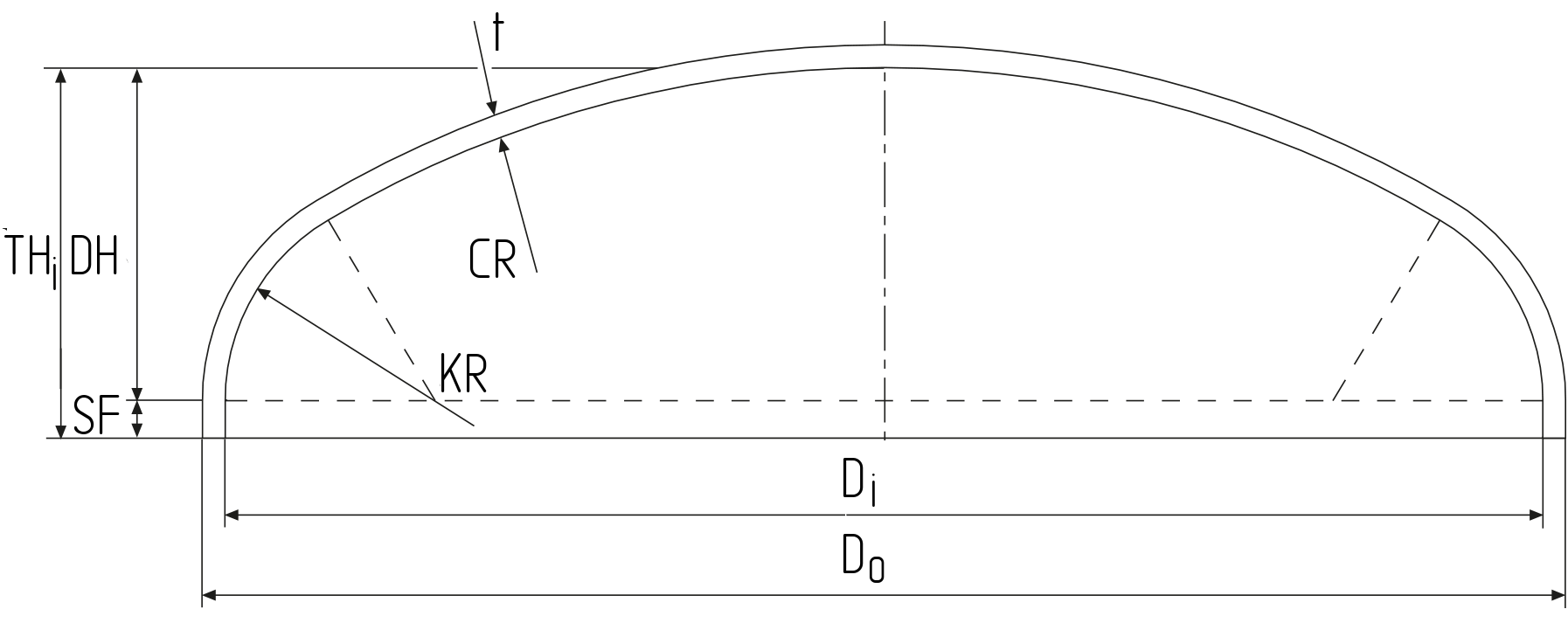
Di = Do - 2 × t
CR = 0.9 × Di
KR = 0.17 × Di
SF acc. to specification
DH = 0.25 × Di
THi = SF + DH
Di = Da - 2 × t
CR = Di / 1.16
KR = Di / 5.39
SF acc. to NF E 81-103
DH = Di / 3.8
THi = SF + DH
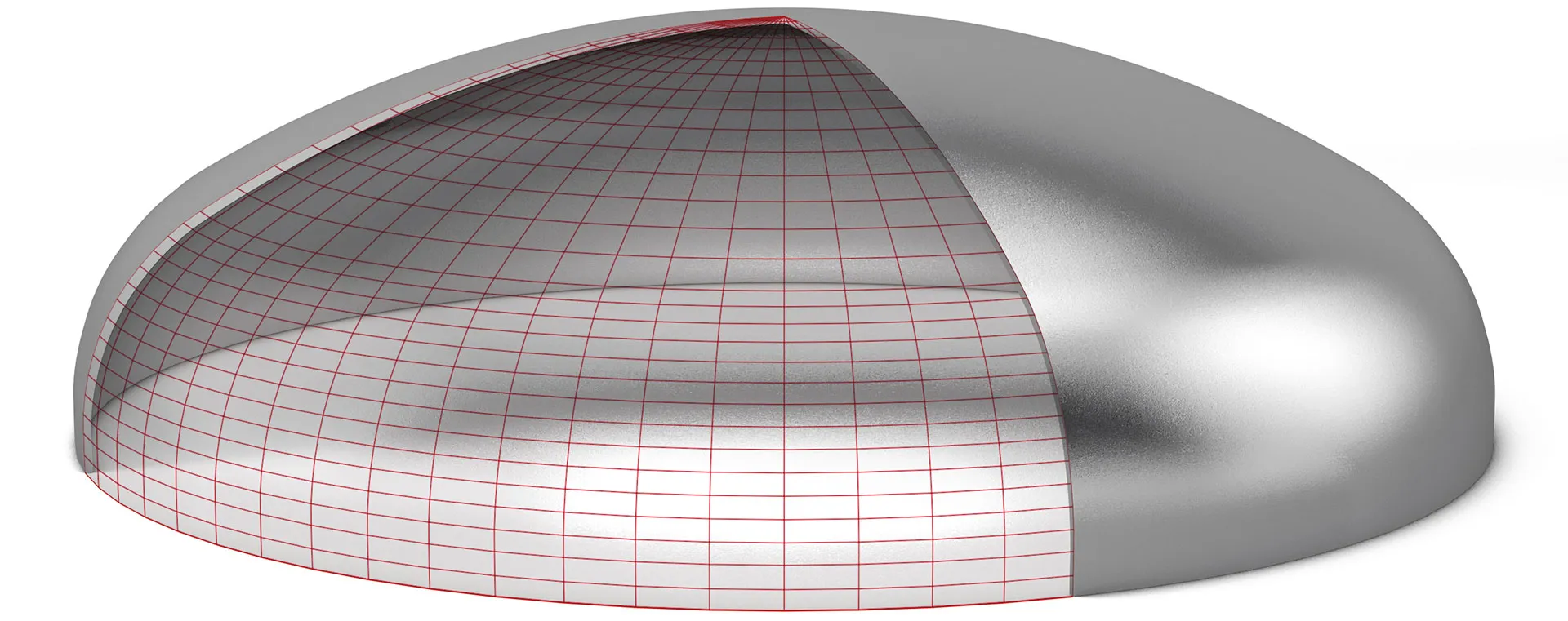
| Specification | Details |
|---|---|
| Standards | DIN 28011, ASME UG-32, EN 13445 |
| Type | Elliptical Head (2:1 Ratio), Welded or Seamless |
| Material | Carbon Steel (HII, P265GH), Stainless Steel (304, 316L, 1.4541, 1.4571), Alloy Steel (15Mo3, 13CrMo44, 10CrMo910) |
| Size Range | Up to 72″ (DN1800) |
| Wall Thickness | Up to 200 mm |
| Manufacturing | Cold Pressing, Hot Forming, Welded Fabrication |
| Surface Treatment | Pickling, Passivation, FBE, 3LPE |
| Testing | Chemical Analysis (HII: C ≤0.16%; 316L: C ≤0.03%), Tensile (HII: YS ≥235 MPa, TS ≥360-510 MPa; 316L: YS ≥205 MPa, TS ≥515 MPa), Hydrostatic (≥9.8 MPa), Radiographic, Ultrasonic, PMI |
| Operating Conditions | Pressure: ≥9.8 MPa, Temperature: Up to 450°C (carbon steel), 870°C (stainless steel) |
| Certifications | EN 10204/3.1, ISO 9001, ASME U-Stamp, Third-Party Inspection |
| Feature | Elliptical Head | DIN 2617 Pipe Cap | Torispherical Head (DIN 28011) |
|---|---|---|---|
| Material | Carbon Steel (HII, P265GH), Stainless Steel (304, 316L), Alloy Steel (15Mo3, 13CrMo44) | Carbon Steel (HII, P235GH), Stainless Steel (1.4541, 1.4571) | Carbon Steel (P265GH), Stainless Steel (1.4541, 1.4571) |
| Standard | DIN 28011, ASME UG-32, EN 13445 | DIN 2617, EN 10253 | DIN 28011, EN 13445 |
| Function | Seals pressure vessels, optimizes stress distribution | Seals pipe ends, protects against corrosion | Seals vessels, distributes stress |
| Corrosion Resistance | Excellent (stainless steel), Good (carbon steel with coatings) | Good (with coatings) | Good (with coatings) |
| Erosion Resistance | Excellent (static application) | Good (static application) | Good (static application) |
| Applications | Pressure vessels, boilers, petrochemical | Boilers, petrochemical, chemical processing | Pressure vessels, boilers, chemical processing |
| Temperature Range | Up to 450°C (carbon steel), 870°C (stainless steel) | Up to 450°C (carbon steel) | Up to 425°C (carbon steel) |
| Cost | Moderate to High | Moderate | Moderate |
| Key Advantage | Optimal stress distribution for vessels | Butt-welded for pipe sealing | Cost-effective vessel head |
Stainless steel or coated carbon steel for harsh environments.
Withstands pressures ≥9.8 MPa in vessels.
2:1 ellipsoidal design optimizes pressure resistance.
Up to 450°C (carbon steel) or 870°C (stainless steel).
Seamless integration with vessel systems.
Available up to 72″ for large vessels.
A curated list of long-tail keywords for elliptical heads, covering standards, materials, and industrial applications.
Note: Elliptical heads are designed for corrosion-resistant, high-pressure sealing in pressure vessels and industrial systems. Contact a certified supplier for detailed specifications.

Standards: ASME B16.9 and ASME B16.25
Description: Designed for butt welding to pipe end, providing permanent and strong connection.
Standards: ASME B16.11
Description: Fit into socket of pipe fitting and welded in place.
Thread Types: NPT and BSP configurations
Description: Feature internal or external threads for screwing onto threaded pipe ends.
Features: Flange, slotted head, knurled or faceted head options
Considerations: Length and width dimensions are critical
Design: Dome-shaped for optimal pressure distribution
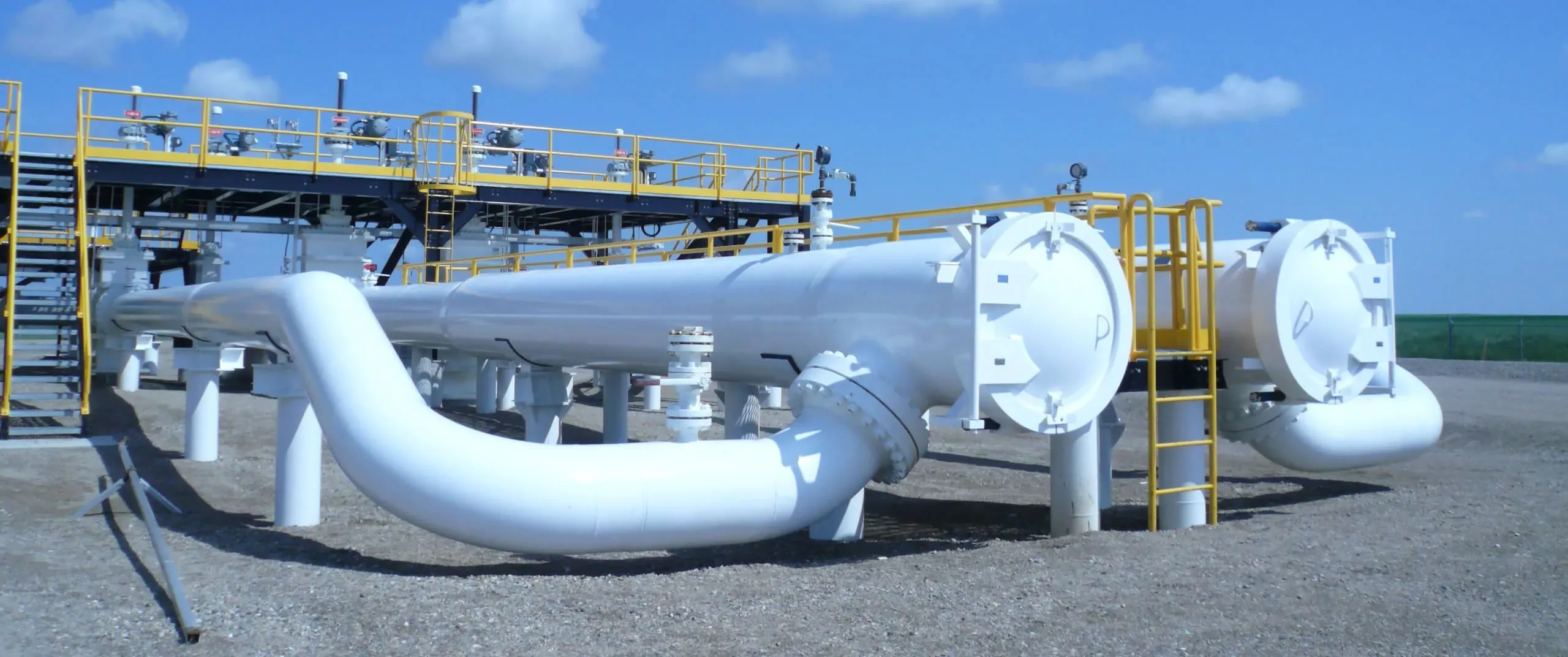
Pipeline terminations, wellhead applications, refinery piping
Process piping systems, chemical storage and handling
Steam and water systems, cooling circuits, fuel handling
Building services piping, HVAC systems, fire protection
Ship piping systems, offshore installations, marine equipment
Hygienic piping systems, processing equipment, sterile systems
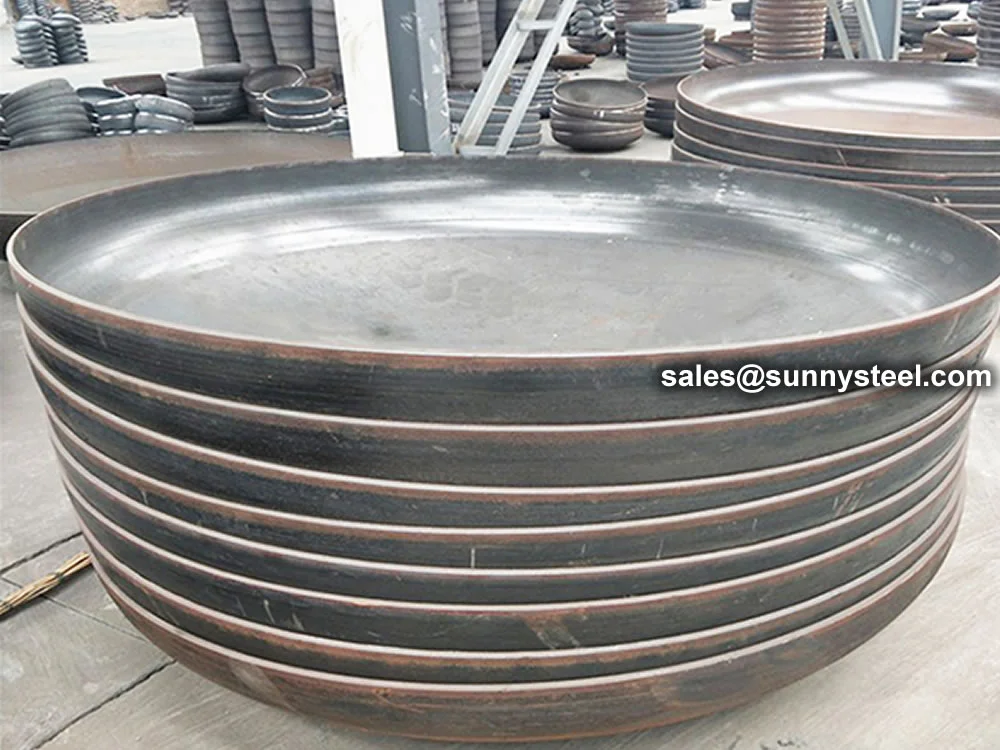
A torispherical head is a common, cost-effective p...
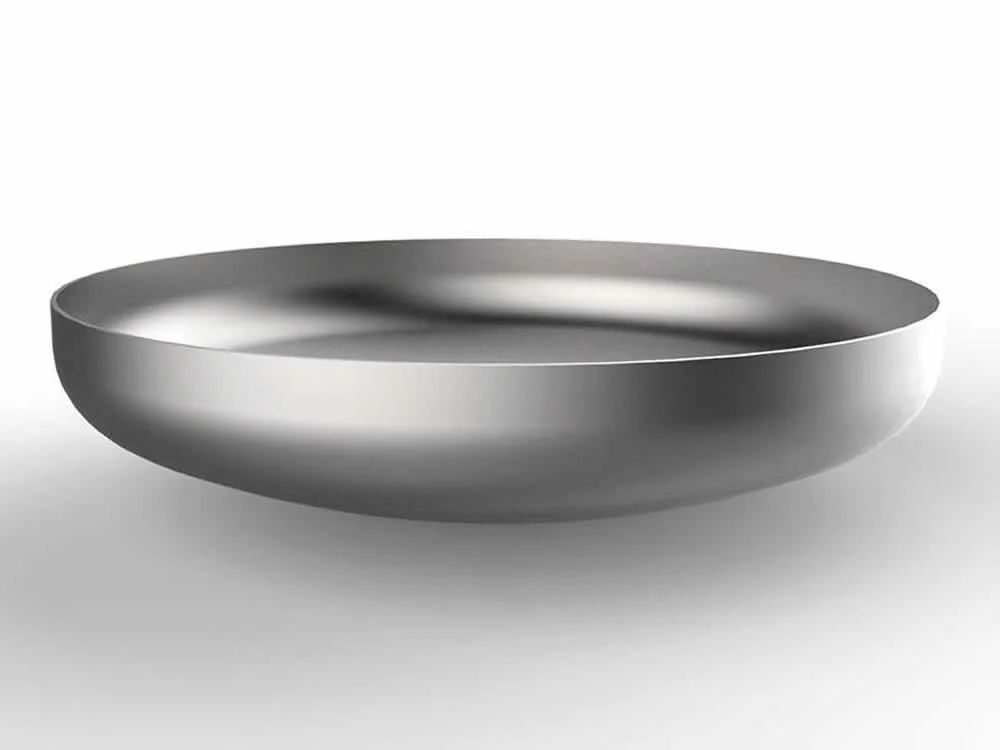
"fond bombé" is a french term meaning co...
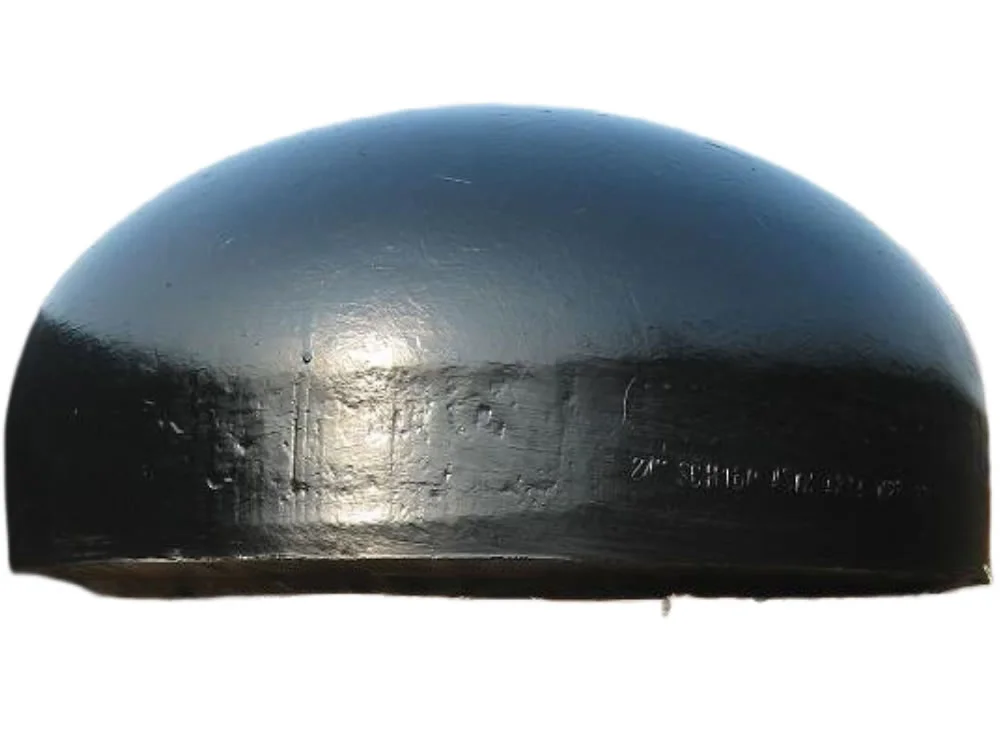
Large size caps are used for connecting pipes of d...
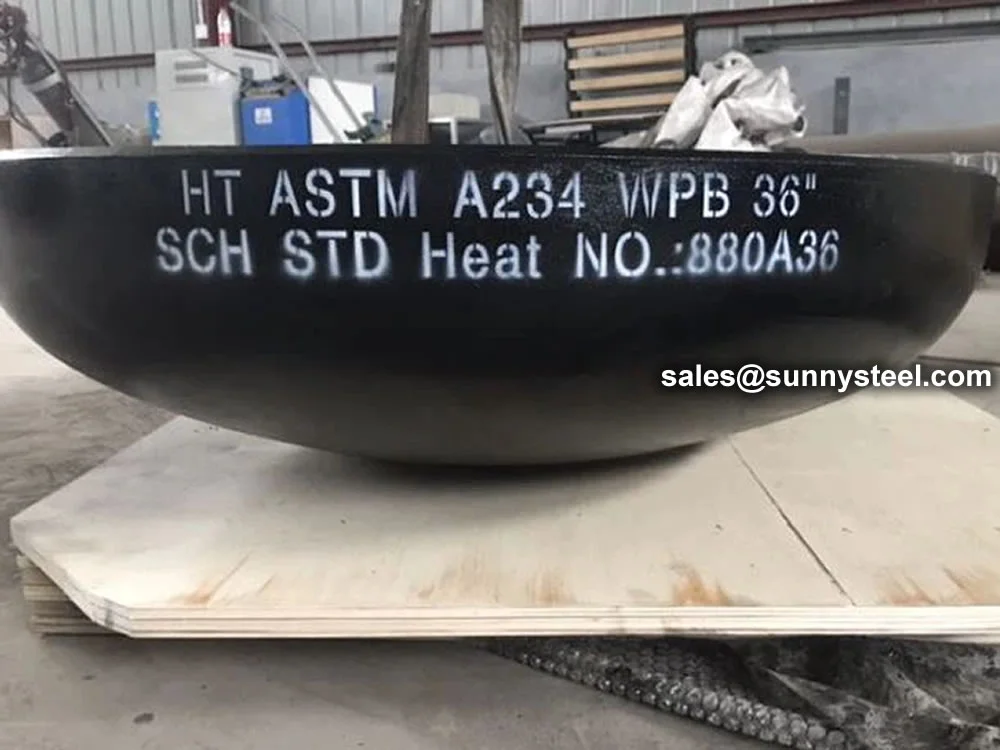
We offer all sa234 wpb pipe caps at really low pri...
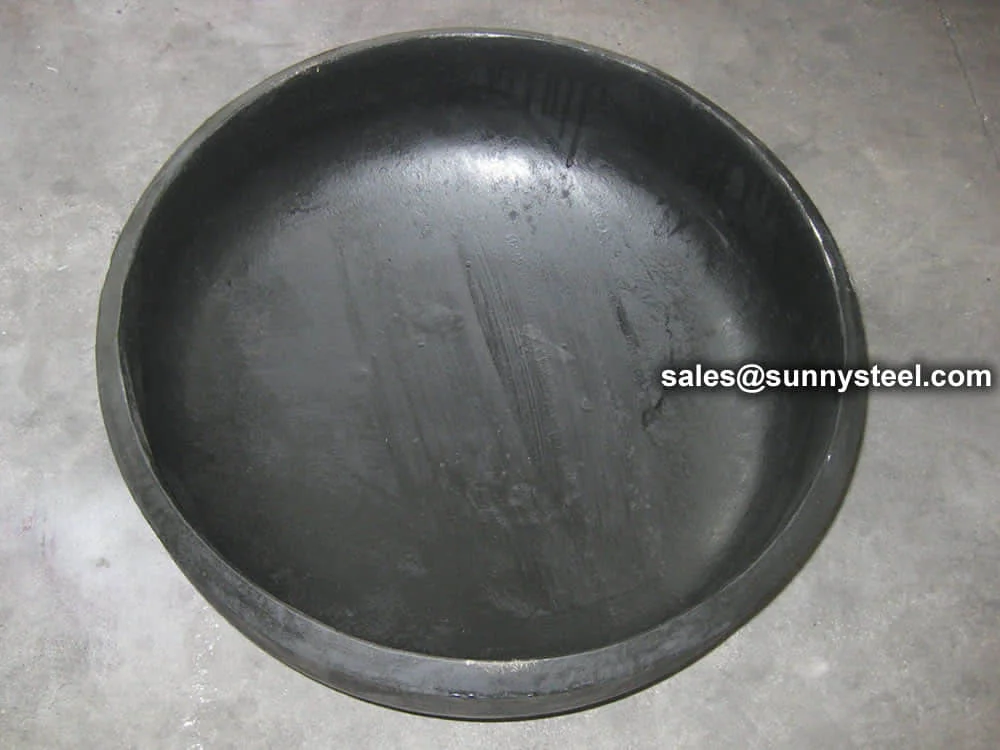
Din 2617 is a german standard for butt-weld pipe c...
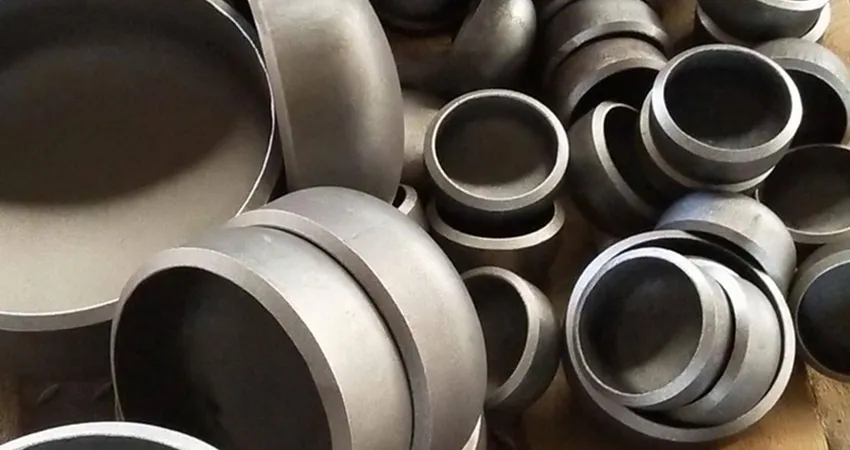
Ansi/asme b16.9 pipe end caps are buttwelding fitt...